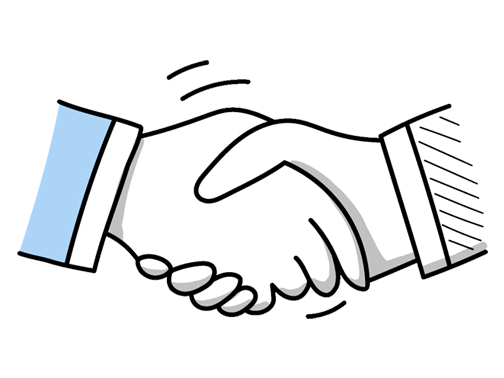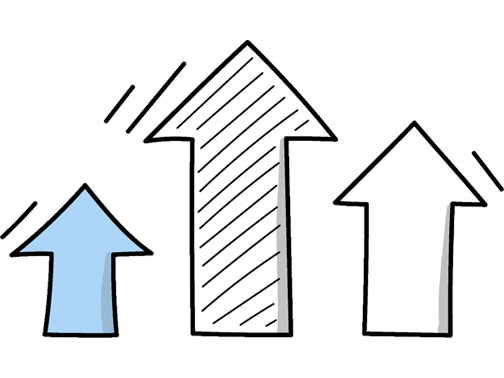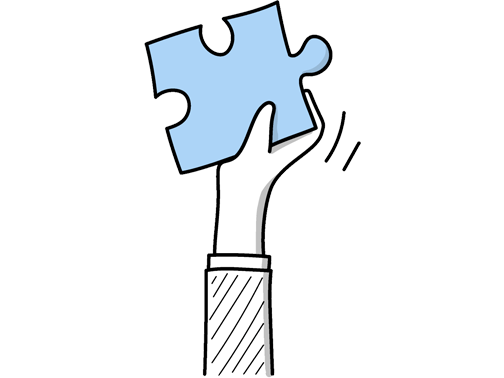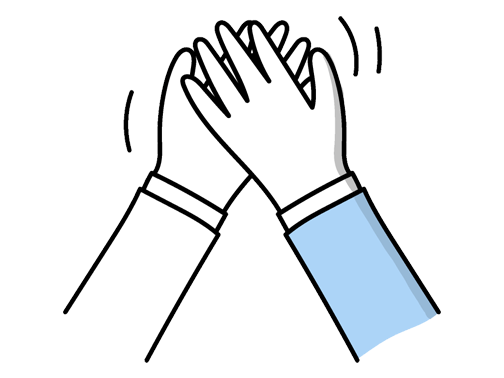Strength and Conditioning Coach Interview Questions (2025 Guide)
Find out common Strength and Conditioning Coach questions, how to answer, and tips for your next job interview
Practice Interviews Online - Identify your strengths and weakness in a realistic Strength and Conditioning Coach mock interview, under 10 minutes
Practice Now »Strength and Conditioning Coach Interview Questions
Employers ask this question to understand how you prioritize athlete safety and program effectiveness by proactively managing risks. You need to explain that you assess individual athlete needs, monitor performance and feedback regularly, and adjust training plans to prevent injury or overtraining.
Example: I start by closely monitoring athletes during sessions to spot any signs of fatigue or discomfort early. Regular check-ins help me understand how they're feeling both physically and mentally. I also review training loads and adjust them based on performance and recovery data. For example, when I noticed a runner showing early signs of overuse, I modified their program to include more rest and cross-training, which helped prevent injury.
This question assesses your ability to recognize and adapt to the unique physical and psychological needs of each athlete to maximize their performance. You need to say that you assess individual differences using data and feedback, then adjust training programs flexibly and evidence-based to support each athlete’s development.
Example: I start by really getting to know each athlete—their strengths, limitations, and goals. From there, I adapt training plans to fit their unique needs, keeping an eye on how they respond through regular monitoring. For example, if an athlete is recovering from injury, I’ll adjust their workload to support safe progress without compromising performance. This flexible, evidence-driven approach helps each person develop optimally.
This question assesses your understanding of structured training progression and how you optimize athlete performance while preventing burnout. In your answer, explain that periodization involves planned variations in training intensity and volume to peak at the right times, and describe how you tailor these phases to individual athlete goals and competition schedules.
Example: Periodization is about planning training in phases to balance stress and recovery, helping athletes peak at the right time. I start with building a base of general fitness, then gradually increase intensity and specificity. For example, with a footballer, early weeks focus on endurance and strength, then shift towards power and speed as the season approaches, ensuring they’re fresh and ready for competition without risking burnout.
Interviewers ask this question to assess your knowledge of how nutrition influences muscle growth, recovery, and overall athletic performance, and to see how you apply this understanding practically. You should explain the role of macronutrients in supporting strength adaptations and describe how you collaborate with nutrition professionals to tailor advice based on each athlete’s goals and training phases.
Example: Nutrition is fundamental in optimizing muscle growth, recovery, and overall performance. I work closely with athletes to tailor nutrition plans alongside training, ensuring they fuel appropriately before sessions and recover well after. For example, for an endurance athlete, I might emphasise carb intake, while a strength athlete may focus more on protein timing. Adjusting nutrition to match individual goals and training demands helps maximise results effectively.
Interviewers ask this question to see how you approach problems and innovate under pressure. In your answer, clearly explain the challenge and its root cause, describe your unique solution, and share the positive results it produced.
Example: In one case, I noticed an athlete struggling with motivation during high-intensity sessions, which was impacting performance. I introduced varied, game-like drills tailored to their interests to keep engagement high while meeting conditioning goals. This shift not only boosted their enthusiasm but also led to noticeable improvements in endurance and focus during competition. It reinforced how creativity in training can directly enhance both mindset and results.
This interview question shows the employer that you are committed to continuous learning and applying the best, evidence-based methods in your coaching. You need to say that you regularly attend professional events, critically assess new research before applying it, and actively engage with other experts through networks or forums.
Example: I make it a habit to read journals like the Journal of Strength and Conditioning Research and attend workshops whenever I can. I also stay connected with a network of coaches, which helps me discuss new ideas and see how they work in real settings. When I come across new studies, I take the time to assess how practical they are before incorporating them into my training programs.
This question helps interviewers understand your foundational beliefs and how they guide your practical coaching decisions. You need to clearly state your core values, explain how they influence your training methods, and show how you support both the physical and mental development of athletes.
Example: My coaching philosophy centers on building trust, consistency, and individual growth. I design sessions that balance challenge with recovery, tailoring programs to each athlete’s needs. By fostering a positive environment, I encourage athletes to push their limits while staying mindful of their wellbeing. For example, I focus on both physical progress and mental resilience, helping athletes develop confidence that extends beyond the gym.
This interview question assesses your ability to enhance athlete performance without risking injury by balancing intensity and safety. You need to explain how you monitor fatigue and recovery, communicate clearly to motivate while respecting limits, and apply evidence-based methods updated by current research.
Example: It’s about pushing athletes just enough to promote growth while knowing their limits. I focus on open communication to build trust, so they feel comfortable sharing how they’re feeling. Using proven techniques and regularly monitoring progress helps me adjust plans to keep them challenged but safe—like when I modified a training load based on feedback to prevent injury while still improving performance.
Hiring managers ask this question to see if you can communicate feedback effectively and motivate athletes to improve without discouraging them. You need to explain that you use clear, empathetic language tailored to the athlete’s understanding, focus on specific behaviors by balancing strengths with areas to improve, and encourage a growth mindset by helping athletes embrace challenges as opportunities to grow.
Example: I focus on clear, supportive communication that highlights what the athlete can control, like technique or effort, rather than personal qualities. For example, I might say, “Try adjusting your foot placement here to improve balance.” This way, they see feedback as a tool for growth, not criticism. Encouraging small, consistent improvements helps build confidence and keeps motivation high.
This interview question is designed to assess your understanding of how to protect athletes from injury and support their recovery, which is crucial for maintaining performance and long-term health. In your answer, explain how you incorporate injury prevention techniques like warm-ups and mobility exercises, tailor rehab plans based on progress and medical guidance, and evaluate success using performance data or injury rates.
Example: In my experience, I focus on identifying common injury risks early and incorporating targeted exercises to address them within training routines. When working on rehabilitation, I customize programs to an athlete’s specific needs, ensuring gradual progression and functional movement restoration. I regularly monitor progress through feedback and performance metrics, adjusting plans to keep recovery on track and reduce the chance of re-injury—like helping a soccer player regain stability after an ankle sprain.
Employers ask this to see how flexible and resourceful you are under pressure, which is crucial in dynamic training environments. You need to describe a specific situation, explain the unexpected challenge, and show how you adjusted your plan effectively to meet your athletes' needs.
Example: During a preseason camp, heavy rain made the outdoor pitch unusable. I quickly shifted to a gym-based circuit focusing on mobility and strength, maintaining intensity while avoiding injury risk. This unexpected change kept the athletes engaged and prepared, proving flexibility in planning is key to effective coaching.
Employers ask this to see how you consider the whole athlete, not just their physical condition. You need to explain that you assess athletes' mental states, integrate motivation and goal-setting into training, and understand how mental resilience improves performance.
Example: Mental and emotional well-being is central to how I approach training. I pay close attention to how an athlete is feeling, adjusting plans to keep motivation and focus high. For example, when an athlete struggles with self-doubt, I'll incorporate confidence-building tasks alongside physical work. Building mental resilience not only helps them push through tough sessions but often translates directly into better performance when it counts.
What they want to know is that you understand the proper form and common errors to ensure safety and effectiveness in training. You need to explain that a proper squat involves feet shoulder-width apart, knees tracking over toes, hips moving back and down, and a neutral spine, while avoiding knee valgus and excessive forward lean to minimize injury risk and maximize performance.
Example: A proper squat involves keeping the chest up, feet shoulder-width apart, and knees tracking over the toes while hinging at the hips. This alignment protects the joints and maximizes muscle engagement. Common errors include letting knees cave in, rounding the back, or lifting heels, which increase injury risk and reduce effectiveness. Focusing on technique not only enhances performance but also helps clients stay injury-free over time.
What they want to understand is how you simplify complex ideas to ensure athletes grasp and apply the training effectively. You need to explain that you use clear, relatable language and practical demonstrations to make concepts accessible and engaging.
Example: When explaining complex training ideas, I focus on keeping the language simple and relatable. I use everyday examples, like comparing muscle recovery to charging a phone, so athletes can easily understand. I also encourage questions and check in regularly to make sure they’re comfortable with the concepts. Building that clear, open dialogue helps everyone stay on the same page and motivated throughout the process.
What they want to know is how you tailor your communication to fit each athlete’s needs and ensure they understand you clearly. You need to say that you adapt your style based on the athlete’s experience, actively listen to their feedback, and use demonstrations or visual aids to make instructions clear and consistent.
Example: I focus on tailoring how I communicate based on the athlete’s personality and experience. I make sure to listen closely, so I really understand their concerns or questions. When explaining exercises or plans, I keep instructions straightforward and check in regularly to confirm they’re on the same page. For example, with younger athletes, I use more visual cues, while with seasoned ones, I keep it direct and to the point.
Employers ask this question to see how you handle setbacks and support athletes through difficulties. You should briefly describe the challenging situation, explain your strategy to manage it, and highlight the successful results or lessons learned from the experience.
Example: During a season, one athlete struggled with motivation after a minor injury. I focused on setting small, achievable goals to rebuild confidence and adjusted their training to keep them engaged without risking recovery. Over time, they regained focus and returned stronger. That experience taught me the importance of patience and personalized support in helping athletes overcome setbacks.
This interview question helps the employer understand your experience and ability to tailor training to diverse athlete needs. You need to briefly describe the types of athletes you’ve worked with and explain how you addressed their specific physical or performance goals with customized programs.
Example: I've worked with a range of athletes, from amateur runners aiming to improve endurance to semi-pro rugby players focusing on power and injury prevention. Each required a customized approach—longer aerobic sessions for endurance, explosive strength training for rugby, and mobility work to reduce injury risk. Tailoring programs to their unique goals and demands helped them achieve consistent progress while staying healthy.
What they want to know is how you manage interpersonal challenges while maintaining professionalism and effective communication. In your answer, clearly describe how you calmly listened to the athlete’s concerns, identified the misunderstanding, and resolved it respectfully while keeping emotions in check.
Example: There was a time when an athlete misunderstood the intensity of a session and felt overwhelmed. I calmly listened to their concerns, acknowledged their feelings, and explained the purpose behind the plan. We adjusted the workload together, which helped rebuild trust and motivation. Staying patient and respectful made the situation a learning moment for both of us.
Questions like this assess your ability to connect with athletes on a personal level and adapt your approach to maximize their performance and morale. You need to explain how you identify each athlete’s unique needs, use positive feedback to build confidence, and foster a supportive team culture that encourages motivation and commitment.
Example: I focus on getting to know each athlete personally, so I can tailor my approach to what drives them. I use positive feedback to build their confidence and highlight small improvements, which keeps them engaged. Creating a team atmosphere where everyone supports each other also helps maintain motivation. For example, celebrating collective milestones often encourages individuals to push harder and stay committed.
Interviewers ask this question to see if you understand the distinct goals and methods behind different training programs. You need to explain that strength training focuses on lifting heavier weights with fewer reps to build muscle power, while endurance training involves lighter weights or body-weight exercises with higher reps to improve stamina.
Example: Training for strength focuses on lifting heavier weights with lower reps to build muscle force, like a powerlifter hitting max lifts. Endurance training, on the other hand, involves lighter weights or bodyweight with higher reps, aiming to improve muscular stamina—think of a long-distance runner sustaining effort over time. Both require different energy systems and recovery strategies, so tailoring the approach based on the athlete’s goals is key.
Interviewers ask this question to see if you can comprehensively evaluate an athlete's fitness and use data to improve performance. You need to explain how you conduct specific tests to gather objective data, analyze the results to pinpoint strengths and weaknesses, and then communicate findings clearly to create customized training plans.
Example: When assessing an athlete’s fitness, I start with a mix of tests—like strength, endurance, and mobility—and watch how they move during their sport. Then, I look at the data to highlight where they excel and where they might need more work. After that, I discuss these insights openly with the athlete, creating a clear plan focused on specific goals, whether that’s improving speed, stamina, or injury prevention.
What they want to know is how you problem-solve and adapt your approach when an athlete isn’t progressing as expected. You need to explain that you assess the athlete’s physical and mental state, adjust your training methods accordingly, and maintain open communication to collaborate on finding the best path forward.
Example: If an athlete isn’t progressing, I first take a step back to understand what might be holding them back, whether that’s physical, mental, or lifestyle factors. From there, I tweak the plan to better fit their individual needs and keep them engaged. Open dialogue is key—I regularly check in with them and colleagues to ensure we’re all aligned and supporting their development effectively.
This question assesses your understanding of how technology and data analytics can improve training effectiveness and athlete care. You need to explain how you use devices and data to monitor and adjust training while balancing this information with the athlete’s personal feedback and needs.
Example: Technology and data play a valuable role in strength and conditioning by giving us clear insights into an athlete’s performance and recovery. For example, tracking workload can help prevent overtraining, while movement analysis can refine technique. That said, it’s important to remember each athlete’s unique context—data should guide decisions, not replace the coach’s understanding of individual needs and how they’re feeling day-to-day.
Questions like this assess your ability to measure progress and adapt plans for optimal athlete performance. You need to explain how you track key performance metrics and use feedback to continually refine your training programs.
Example: I gauge the success of my training by tracking athletes’ progress through both performance metrics and how they feel physically and mentally. Regular feedback sessions help me understand what’s working or if something needs tweaking. For example, if an athlete struggles with recovery, I might adjust volume or incorporate more mobility work to keep them progressing without burnout. It’s about staying flexible and responsive to their needs.
This interview question aims to assess your practical impact and ability to tailor training programs effectively. You need to briefly describe the athlete's initial challenge, the specific changes you made in the program, and the measurable improvement in their performance.
Example: Certainly. I worked with a sprinter struggling to break their personal best. By tailoring a program focused on explosive power and recovery, their acceleration noticeably improved within weeks. Over a season, they shaved significant time off their 100m dash, helped by consistent feedback and adjustments. It was rewarding to see the athlete grow both physically and mentally through a structured yet adaptable approach.
Ace your next Strength and Conditioning Coach interview with even more questions and answers
Common Interview Questions To Expect
The interviewer is looking for examples of problem-solving skills, conflict resolution abilities, and how you handle challenges in a professional setting. Answers should demonstrate your ability to overcome obstacles and work effectively under pressure.
Example: Sure! One challenge I faced was when a client was resistant to following the workout plan I had created for them. I addressed the issue by having a one-on-one conversation with the client to understand their concerns and adjust the plan accordingly. By listening to their feedback and making necessary changes, I was able to build trust and ultimately help the client achieve their fitness goals.
The interviewer is looking for evidence that you have done your research on the company, understand their values and goals, and are genuinely interested in working for them. You can answer by discussing their history, mission, recent achievements, or any unique aspects of the company.
Example: I know that your company is a leading provider of strength and conditioning services in the UK, with a strong focus on helping athletes reach their full potential. I also understand that you prioritize individualized training programs and have a team of experienced coaches dedicated to helping clients achieve their fitness goals. I am excited about the opportunity to be a part of a company that is so committed to excellence in the field of strength and conditioning.
The interviewer is looking for evidence of your commitment to ongoing learning and improvement in your field. You can discuss courses, certifications, conferences, workshops, or other relevant activities you plan to pursue.
Example: I'm always looking to stay up-to-date with the latest trends and research in strength and conditioning, so I plan on attending a few workshops and conferences throughout the year. I'm also considering getting certified in a new training method to expand my skill set. Overall, my goal is to continuously improve and provide the best possible training for my clients.
The interviewer is looking for examples of how you have successfully collaborated with others, communicated effectively, and contributed to achieving team goals. Be prepared to discuss specific instances where you worked well with others.
Example: Sure! In my previous role as a Strength and Conditioning Coach, I worked closely with other coaches, athletes, and support staff to develop and implement training programs. We communicated regularly to ensure everyone was on the same page and working towards our common goal of improving athletic performance. Together, we were able to achieve great results and help athletes reach their full potential.
The interviewer is looking for questions that show interest in the company, the role, and how the candidate can contribute. Asking about company culture, team dynamics, and future goals are good options.
Example: Yes, I was wondering about the team dynamics within the organization and how collaboration plays a role in achieving goals. Can you tell me more about the company culture and how it supports professional development for employees? Lastly, what are the long-term goals for the company and how does this role fit into that vision?
Company Research Tips
The company's official website is a goldmine of information. Look for details about the company's mission, values, culture, and goals. Pay special attention to any information related to their sports or fitness programs. This can give you insights into their approach to strength and conditioning, the types of athletes they work with, and the specific challenges they face. Also, check if they have any blog posts or articles related to strength and conditioning, as these can provide valuable insights into their philosophy and methods.
Tip: Don't just skim the surface. Dive deep into the website, including the 'About Us', 'Our Team', and 'News' sections. Look for any information that can help you understand the company better and tailor your responses during the interview.
Social media platforms can provide a wealth of information about a company. Check their Facebook, Twitter, Instagram, LinkedIn, and YouTube channels. Look for posts related to their strength and conditioning programs, any achievements or milestones, and feedback from athletes or clients. This can give you a sense of their public image, how they interact with their community, and the impact of their work.
Tip: Pay attention to the tone and style of their posts. This can give you clues about the company's culture and values. Also, look at the comments and responses to their posts to get a sense of how they handle feedback and criticism.
Stay updated with the latest news and trends in the strength and conditioning field. This can help you understand the current challenges and opportunities in the industry, and how the company fits into the bigger picture. Look for industry reports, articles, and blogs that provide insights into the UK's fitness and sports sector.
Tip: Use this information to show your knowledge of the industry during the interview. Discuss how the company can leverage current trends or overcome challenges in the strength and conditioning field.
Reach out to current or former employees of the company, or other professionals in the strength and conditioning field. They can provide insider information about the company's culture, expectations, and challenges. LinkedIn is a great platform for this. You can also attend industry events or webinars where you might meet people who can provide valuable insights.
Tip: Be respectful and professional when reaching out to people. Make it clear that you're seeking information to prepare for an interview, and thank them for their time and insights.
What to wear to an Strength and Conditioning Coach interview
- Clean, well-fitted athletic wear
- Comfortable sports shoes
- Avoid flashy logos or prints
- Ensure clothes are wrinkle-free
- Wear a sports watch if possible
- Light makeup for women, clean-shaven for men
- Neat and tidy hairstyle
- Avoid excessive jewelry
- Carry a professional bag or backpack
- Wear a light, fresh scent





